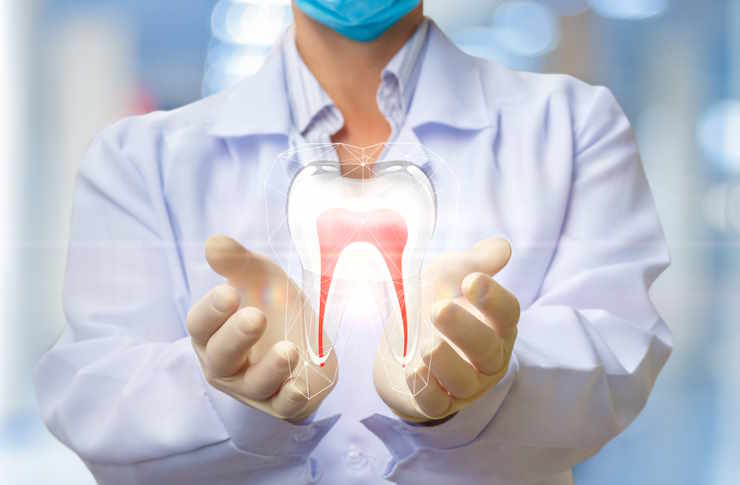Dental Bridges: Options, Procedure, and Cost Considerations
A dental bridge is a common tooth restoration used to replace one or more missing teeth by anchoring an artificial tooth to adjacent natural teeth or implants. Bridges can restore chewing function, help maintain facial structure, and improve the appearance of your smile. Understanding the types of bridges, the role of dental crowns and implants, and the practical steps of the dental procedure can help you discuss options with your dentist and plan for dental care and costs.

This article is for informational purposes only and should not be considered medical advice. Please consult a qualified healthcare professional for personalized guidance and treatment.
What is a dental bridge and how does it restore teeth?
A dental bridge fills the gap left by missing teeth using one or more replacement teeth (pontics) supported by abutments on either side. Traditional bridges attach to prepared adjacent teeth that receive dental crowns, while implant-supported bridges anchor to dental implants implanted into the jawbone. Tooth restoration with a bridge helps distribute bite forces, prevents neighboring teeth from shifting, and can improve speech and chewing. The choice of bridge depends on the condition of surrounding teeth, the jawbone quality, and overall oral health.
How does a dentist perform the bridge dental procedure?
The bridge process usually involves several visits to a dental clinic. First, a dentist evaluates oral health, takes X-rays, and determines whether preparatory treatments—such as root canal therapy, periodontal care, or extractions—are needed. For a traditional bridge, the abutment teeth are reshaped and fitted with temporary crowns while impressions are taken for the final dental crowns. For implant-supported bridges, surgical placement of implants into the jawbone is followed by a healing period before attaching the prosthetic bridge. The procedure requires coordination between general dentists, prosthodontists, and dental labs for precise tooth restoration.
What materials are used: zirconia crowns and ceramic crowns?
Materials influence durability, aesthetics, and cost. Ceramic crowns and zirconia crowns are common choices for bridges. Ceramic (porcelain) crowns provide natural color-matching and are suitable for front teeth. Zirconia crowns offer higher strength and fracture resistance, making them suitable for posterior restorations and implant-supported bridges. Metal-ceramic (porcelain-fused-to-metal) options remain available where additional strength is needed. Your dentist will advise based on bite forces, location of the bridge, and esthetic goals for your smile while balancing longevity and material-specific considerations.
How does oral health and the jawbone affect bridge longevity?
A healthy jawbone and surrounding gums are essential for long-term success. When teeth are missing, the jawbone can resorb over time; dental implants help preserve bone by providing stimulation similar to natural roots. Bridges supported by natural teeth rely on the strength and stability of those abutments—untreated gum disease or decay can compromise them. Ongoing dental care, including regular checkups, flossing under the pontic area, and managing occlusion, supports the lifespan of the bridge and the health of adjacent teeth. A dentist can monitor changes and recommend maintenance or replacement when needed.
Dental cost, dental insurance, dental tourism, and provider options
Costs for bridge procedures vary widely depending on treatment type, materials, clinician expertise, and geographic location. Dental insurance may cover a portion of a traditional bridge but often has limits and waiting periods. Some patients explore dental tourism or border clinics seeking lower fees, where spanish-speaking dentists are available in many regions; this can reduce upfront dental cost but requires careful research on clinic standards and aftercare. Discussing payment estimates with your local dental clinic and confirming what dental insurance will cover helps set realistic expectations for dental treatment and long-term care investment.
| Product/Service | Provider | Cost Estimation |
|---|---|---|
| Fixed (three-unit) dental bridge with ceramic crowns | Aspen Dental (or private dental clinics) | $1,200–$3,000 per bridge (estimate) |
| Implant-supported bridge (multiple implants) | Specialist prosthodontist or oral surgeon in private practice | $5,000–$15,000+ depending on implants and lab work |
| Bridge or similar restorations via dental tourism / border clinics | Clinics listed on platforms such as Dental Departures; regional clinics in Tijuana, Cancun, or Baja | $800–$2,500 per bridge (estimate) |
Prices, rates, or cost estimates mentioned in this article are based on the latest available information but may change over time. Independent research is advised before making financial decisions.
Conclusion
Dental bridges remain a practical solution for replacing missing teeth, with choices that range from traditional crown-supported bridges to implant-supported restorations. Material options like ceramic crowns and zirconia crowns influence aesthetics and strength, while the condition of the jawbone and oral health play major roles in treatment planning. Costs and coverage vary significantly; consult your dentist and review dental insurance details and credible provider options in your area to choose the most appropriate approach for tooth restoration and long-term oral health.






